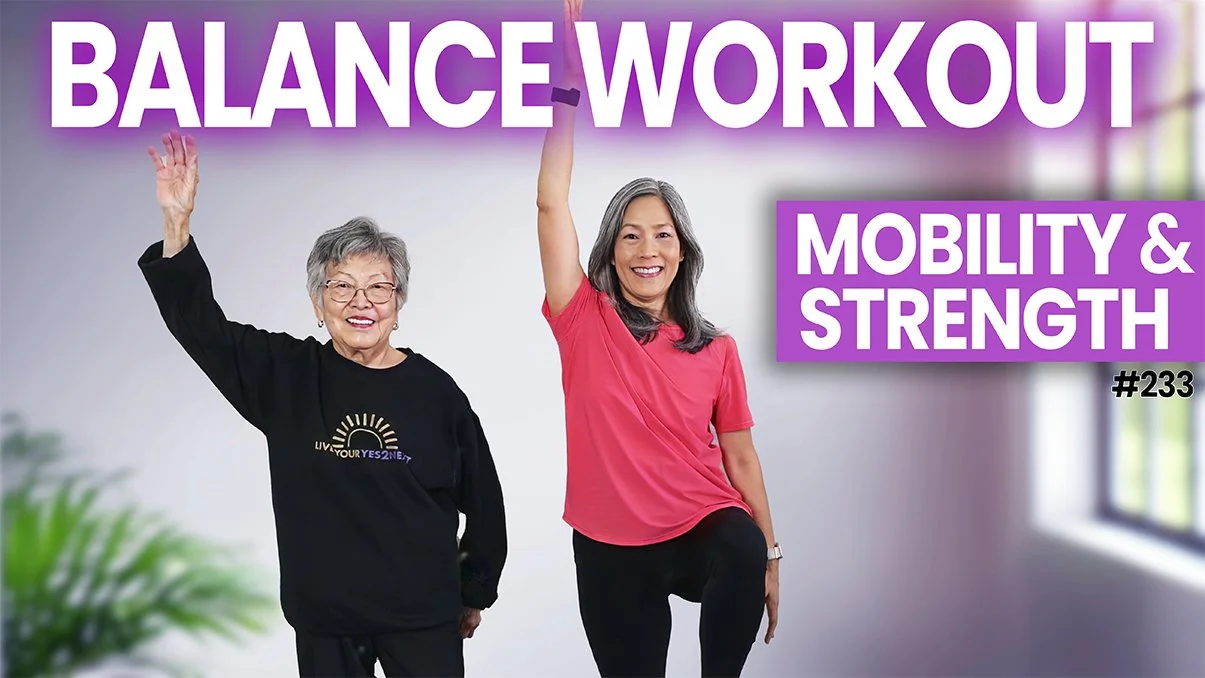Senior Stretching Routine: Maintaining Mobility and Increasing Flexibility
Freedom from restrictions and improved mobility greatly enhances the quality of life for the elderly. Regular senior stretching routine can reduces muscle stiffness, enhances blood circulation and reflexes, and improves the movement of muscles around the joints.
As a senior citizen, being aware of your capability for self-care is essential. Daily stretches can significantly help smooth out tightness in muscle fibers and maintain overall flexibility.
Benefits of Stretching for Seniors
Enhanced Flexibility: Improved flexibility of muscles and joints enables seniors to use their bodies effectively to perform basic day-to-day activities.
Improvement in mobility of joints, muscles, and skeletal areas significantly helps reduce the risk of injuries.
Pain and Posture: Muscle pain and strain can be effectively calmed and improved through a senior stretching routine. Enhanced flexibility greatly alleviates muscle soreness and encourages better posture.
Essential Stretching Exercises
Stretches for the Upper Body
Overhead Side Stretch
Begin by standing or sitting on a chair with a waist-high back, feet hip-distance apart
Elevate hands to shoulder height and gently bend to one side
Hold for a duration of 10 to 30 seconds
Switch sides and repeat
Shoulder Stretch
Hold one arm across your chest
Use the other arm to gently draw the arm closer to your sternum
Hold for 10 to 30 seconds while gently applying pressure
Switch arms and repeat the process
Lower Body Stretches
Hamstring Stretch
While in a seated position, extend one leg ensuring the heel is parallel to the ground while the other foot rests flat
With a straight back, reach toward the toes of the extended leg
Hold for 10-30 seconds
Repeat with the other leg
Calf Stretch
Stand facing a wall with one leg forward in a bent position
Position the other leg behind you, standing on the heel
Bend the front knee while keeping your back straight
Hold until you feel a stretch in the back calf for 10-30 seconds
Switch legs and repeat
Neck Stretch
Sit or stand with your back straight
Tilt your chin toward one side as your ear lowers closer to your shoulder
Avoid lifting the shoulder during this movement
Hold for 10-30 seconds before switching sides
Designing An Effective Senior Stretching Routine
Warm Up: Complete a warm-up, such as light walking, to prepare muscles for stretching.
Frequency: Perform stretching exercises 2-3 times per week, increasing frequency as flexibility improves.
Technique: Practice deep breathing while avoiding bouncing movements or jerky motions.
Listen to Your Body: Discontinue any stretch that causes pain, consulting a healthcare provider if necessary.
Stretching Tips To Increase Flexibility
Incorporate Activities Like Yoga or Tai Chi: These practices include movements that enhance strength, balance, and flexibility.
Maintain Proper Hydration: Good muscle hydration aids flexibility and helps muscles remain supple.
Pace Yourself: Monitoring progress helps maintain motivation and acknowledges positive changes in your body.
Final Thoughts
Incorporating a consistent senior stretching routine into daily activities enhances flexibility and general well-being while reducing stiffness. A positive lifestyle can be achieved through maintaining optimal mobility and independence with these stretches.

